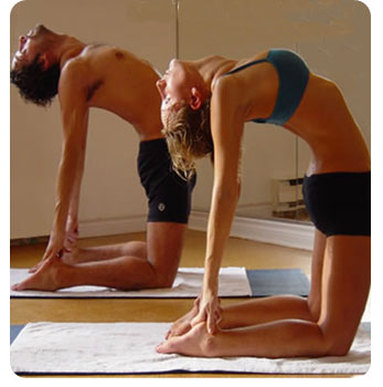 How Yoga Can Help Your Lower Back Pain
By Sarah Court www.exercise.comBack pain has become an epidemic in the US. 80 percent of the population will report back pain at some point in their lives, and we spend about $16 billion a year to treat it. Pain in the low back is especially common for many reasons, some of which are outlined below. Can yoga help with this pain? Absolutely. Low Back StructureWhat is it about the structure of the lower back that would put it at such particular risk for pain? Some of it has to do with the shape of the spinal bones, or vertebrae. The spine is made up of 24 vertebrae, plus a sacrum and a coccyx (tailbone). Those 24 vertebrae all have different shapes in relation to the bones above and below, and this means they will have more or less movement available, depending on what part of the spine they are in. For example, the cervical spine, also known as the neck, is extremely mobile in many directions, but the thoracic spine (where your ribs are) is not (and for good reason: there are important organs in there, like your heart and your lungs). The lumbar spine, also known as your lower back, is also very mobile like the neck, but at the same time it supports the weight of the rest of the torso. This makes it especially prone to injury; if we overstretch the muscles, and then bear too much weight (say, bending over to pick something up) this can put too much pressure on the low back as a result. What Causes Low Back Pain?In addition to the structure of the back, there are other parts of the body that might contribute to pain in the lower back as a result of our daily habits. Sitting for a long time in a car, or at a desk, will tighten the hamstrings on the back of the thighs, and tight hamstrings set up a line of pull into the buttock muscles and into the low back. When we sit with our upper body hunched forwards, it pulls on the muscles of the lower back, which can then become stuck that way, or "locked long." These muscles then have a very hard time contracting again, which can lead to discomfort. These are just a few possible reasons—there are certainly more. How Does Yoga Help?Beginning a yoga practice will help to clear up some of the muscular issues addressed above—the hamstrings will get a chance to stretch, and the back will get to contract properly and regain its essential tone. In addition, strength and flexibility will be brought to the rest of the body, and there will be a greater integration of all musculature as it works together to support you! Sarah Court is a featured Yoga Columnist on Exercise.com where she writes about yoga, fitness and exercise. She teaches weekly Yoga Tune Up® and Vinyasa classes at various locations in Los Angeles, and trains yoga teachers in anatomy and in Yoga Tune Up® across the country. She's been featured in the New York Times and as one of nursingschool.net's 100 Incredible Yoga Teachers Who Blog.
5 Excuses That Won’t Fly in 2011It’s 2011. Your old excuses for not getting in shape won’t work. As Dr. Evil (Austin Powers) said, ZIP IT! I don’t want to hear them anymore! Read em’, then haul your excuseless butt to the gym! 1. I have no time.According to a story in a recent issue of Men’s Health magazine, Barack Obama works out for 45 minutes a day, 6 days a week. Obama doesn’t just play basketball either. Our new president stays fit to lead with cardio and weight lifting. He also says he wishes he could train 90 minutes a day. Have you ever seen what the daily schedule of a U.S. president looks like? If the busiest man in the world can train every day for 45 minutes a day, then what’s your excuse? ZIP IT! You ain’t got one! 2. It’s too expensive.Getting in shape certainly is expensive… if you keep wasting hundreds of dollars, month after month on worthless “miracle” weight loss pills, internal cleansing gimmicks and “magic” potions that all claim to make you slim. Deceptive advertising and slick marketing for bogus diet aids is more rampant than ever. 2010 was the year of thewu-long tea scam, the acai berry scam, and, of course, the ubiquitous “cleansing” and “detox” gimmicks . Unless you put on your critical thinking cap and learn to investigate before you invest, then you’ll get scammed by 2011’s flavor of the year as well. Your quest for those elusive “6-pack” abs will not only continue to be expensive, you’ll go broke. Walking, jogging, calisthenics and body weight exercises are FREE. If you want to know what’s really expensive, tally up the cost of legitimate expenses like natural food, gym memberships, fitness education, dumbbells and so on, and compare that to your doctor’s bill when you’re sick. READ MORE:
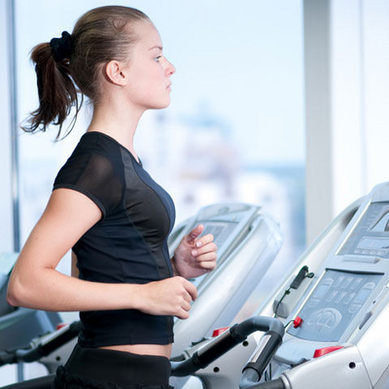 3 Interval Training Plans to Build Fitness Fast
By Jason R. Karp, Ph.D.www.shape.comLess time in the gym doesn't mean you have to sacrifice fitness if you know this secret: Interval training. Research shows that interval training—workouts in which you alternate periods of high-intensity exercise with low-intensity recovery period—increases fitness and burns more calories over a short period of time than steady-state cardio (you know: just doing the same thing for your whole workout time). So how do you get the most out of interval training, and how long should each push and recovery be? One of the many great things about intervals is that there's no single hard-and-fast rule. Different lengths of work and recovery bring different benefits—and they're all good. Start with these three interval training plans. Just know this: Interval training is tough, so if you're just starting to work out, spend a few weeks to a month building your stamina with cardio workouts before adding interval training to your routine. Add these interval training plans to your gym routine once a week to burn more calories, build more fitness, and get out of the gym faster. 1. Cardio BlasterThis is one of the best interval training workouts you can do to improve fitness. It burns lots of calories in a short amount of time. How to do it:- Warm up for 15 minutes.
- Then run, bike, or row for 3 minutes at 90 to 95 percent of your maximum heart rate (should feel like 8.5 or 9 on a scale of one to 10). Take three minutes active recovery (you're still moving, but at an easy pace) and repeat the 3 on/3 off pattern three to four more times.
- Finish with a 10-minute cooldown.
Bonus benefit: This workout is like weight training for your heart—it strengthens your cardiovascular system, which improves your overall health. READ MORE:
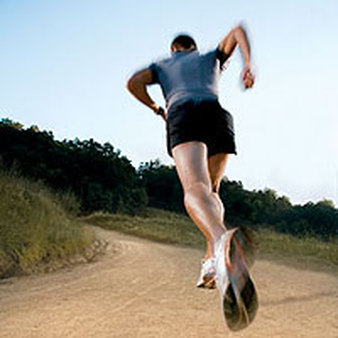 The Right Running Shoe FitGetting the proper fit is the most important factor when buying new running shoes. Here, four prominent specialty running-shoe store owners--each of whom has fitted thousands of runners--share some of their secrets.From the August 2004 issue of Runner's World 1. Line up the ball. "When you try your shoe on, the ball of your foot (the widest part) should line up exactly with the widest part of the shoe. If that fit is right, everything else should line up--from the toes to the heel. As for width, when you're standing in the shoe, your foot should rest gently against the sides of the shoe, rather than jamming up against them or not touching at all. Also, be sure your toes aren't being pinched from the side." -Chris Schmidt, The Finish Line, Allentown, Pennsylvania 2. Stand on one foot. "I have people stand on one foot, which puts extra stress on the shoe and the foot, so you can better tell if it's going to feel right. When standing, your foot should feel situated atop the midsole. That is, it shouldn't feel like it's moving around too much on top of the midsole, and it shouldn't feel like it's flopping over the sides of the midsole either. When you run in the shoe, don't be too put off if it feels overly supportive, as most runners need more support (or motion control) as they age." -Curt Munson, Playmakers, East Lansing, Michigan 3. Check for balance. "I have a runner stand in the shoes to see if he or she feels properly balanced. You should feel anchored; the shoes shouldn't be making you lean in a certain direction. There should be plenty of toe space, and when you walk or run, your heel shouldn't slide out of the shoe at all. I often have people run in the shoes down a slight hill next to the store. Downhill running exaggerates impact, so if the shoes feel okay, you should be fine in them." -Chet James, Super Jock 'n Jill, Seattle 4. Focus on the ride. "Once we determine the type of shoe you need--whether motion-control, stability, or another--we bring out shoes from three different manufacturers and have the customer try them all. Then you need to be sure there's no pinching, or a seam that's pressing against your foot. Finally, we have people run or walk in the shoe to really focus on the ride, or how the shoe feels from the point when the heel hits the ground to when the toe lifts off it." -Don Lucas, Luke's Locker, Dallas See More Articles in Running Shoe Basics
Redesign your upper body using this cutting-edge muscle planBy Todd Durkin, C.S.C.S., Illustrations by Kagan McLeod, Photographs by Scott McDermott, Posted Date: April 11, 2010 IT TAKES MORE THAN A BIG BENCH PRESS to build a big chest. That's because your chest muscles can do a lot more than push things away when you're flat on your back. They can also pull things toward you when you're standing up. In fact, your pectoral muscles perform more actions at more angles and in conjunction with more upper-body muscles than most of us ever consider. Sometimes they're the stars, but on other exercises they're more like bench players. Because of that, they respond to low reps, high reps, and everything in between. (For more ways to sculpt a bigger chest, pick up a copy of The New High Intensity Training today!) The best chest-building program takes advantage of that versatility by working your pecs and all their buddies, using every angle and rep range. You can end up with more beef in your back, shoulders, and arms, and in the process develop bigger chest muscles than you'd ever see with a steady diet of benches, benches, and more benches. (Find more exercises that can help any man to go from scrawny to brawny. Men's Health Personal Trainer features workouts and videos demos that you can download and take with you to the gym. Find out more) THE WORKOUTDo this workout twice a week, resting for at least 2 or 3 days in between. (Work your lower body on a separate day.) Alternate between exercises of the same number until you complete all the sets in that pairing. So you'll do 1 set of exercise 1A, rest for 45 seconds, do 1 set of exercise 1B, and rest 45 seconds again. Repeat until you complete all sets, and then rest 2 minutes before moving to the next pair. READ MORE:
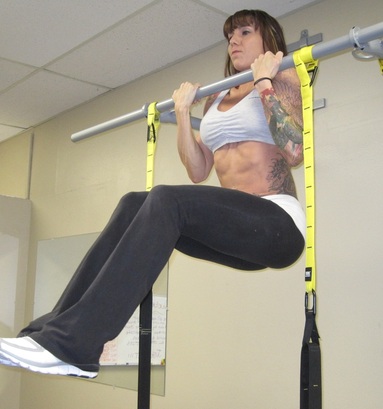 Your complete instructions for mastering one of the world's greatest exercises By Alwyn CosgrovePosted Date: September 17, 2008There's an exercise epidemic plaguing American men. I call it thechinup conundrum, and chances are you're a victim.
It goes like this: A guy wants to do chinups, but because he can only complete one or two good reps, he skips them altogether and heads to the lat pulldown machine. Maybe he's embarrassed, maybe he's lazy, or maybe he just thinks, What's the point? So he never improves at chinups, and as a result abandons them forever. Sound familiar?
The fact is, the fittest men do chinups. This exercise is one of the best ways to build your back and biceps, and it's a true test of both upper-body strength and endurance. But you probably already know all that.
That's why I've created a chinup plan for every man. Whether you can't yet manage a single one or simply want to break out of your 8-rep rut, I have a routine for you.
If you can't do more than one chinup...
READ MORE:
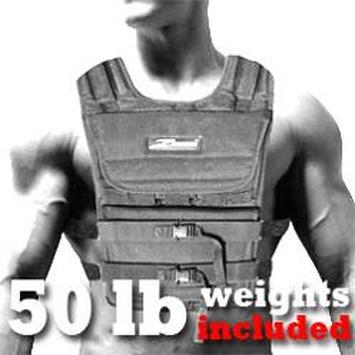 Weight Vest Benefits by Lauren Miller, Demand Media- All types of athletes use weight vests to enhance their workouts. Vests include weights that athletes can increase or decrease to help them build strength and endurance. They are also used by walkers to help burn calories. Sporting goods stores and specialty retailers sell many types of weight vests with high-tech materials and a wide range of sizes and features.
- Calorie Burning-Vests help to concentrate your weight in the upper body and chest during training. They work your abdominals and help you burn calories. Regarding endurance activities, a study in the European Journal of Applied Physiology and Occupational Physiology showed that vests increased the metabolism of cross-country skiers and distance runners. Another study by the University of Iowa found that vests helped increase the calories burned by walkers using the apparel.
READ MORE:
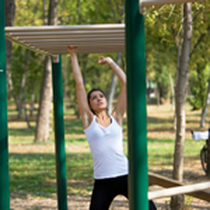 By Dena SternExercise.comThe jungle gym at the playground is a fantastic way to introduce kids to fitness; and it also doubles as a great way for adults to exercise without using costly equipment. Why should your kids reap all the benefits of this fantastic outdoor fun? Next time you take your kids to play why not try one or all of these fantastic moves to help you tone, strengthen and stretch your muscles. Each of these easy to do exercises uses equipment and materials found at most playgrounds. Get creative with your workout routines. The Move: Hanging L HoldWhat It Works: Arms, Back, Shoulders & Core Playground Equipment You'll Need: Monkey Bars READ MORE:
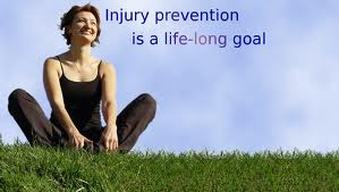 My topic for this Fitness Journal entry is about Fitness Injury Prevention. It's become apparent in multiple conversations I've had this past week; more often than not people are getting injured repeatedly while trying to better their health. The truth is these are people that have had proper fitness direction, people that are just getting started on their fitness journey, and people that are just plain pushing themselves to hard to fast. It doesn't matter the fitness level your starting at that determines if your going to get injured or not, it's the amount of preparation for the level of fitness, that determines if you get injured. It's fact that we all will get some form of injury at some point in our fitness journey, but the most important thing is to realize that prevention of injuries is simple and a life-long goal. You will never get to a point in your fitness journey that stretching and properly warming up shouldn't be your first priority before working out. I'm sure I'm not alone when I see lots of people enter the gym and going straight to working out without warming up or doing any form of stretching. Yes, I will come clean and say I have been one of those people, but have realized the hard way (the painful way) of the importance of warming up and stretching. I'm not getting any younger that's for sure, but by taking care of myself I can feel younger. I'm a great example of constant injuries that are hindering my fitness goals. It all started with my lower back and a pinching of my Sciatic Nerve, which for the most part limited me from almost every kind of physical activity. Second, it was a calcium deposit in my left shoulder that when I lifted my arm cause unforgiving pain. Third it was re-occurring inflammation in my right knee that kept me sidelined from almost every kind of cardio and knee bending exercises. Fourth it was my lower back and hip joint that limited my mobility to preform even simple athletic tasks. The point here is that all of these injuries could have been prevented by me. I was ambitious but not cautious. Under the care of Dr. Ryan Nienaber I have been educated that my lower back pain is due to a weak and unconditioned hamstring and underlying muscles in the hip joint. My back pain flares up when I over due any kind of squatting motion. So now I'm slowing down and doing more and more squatting endurance workouts to help build up and strengthen those muscles. More like a therapy kind of workout. As for my knee well it's just as simple. As long as I keep my Quadricep muscle stretched and proper warmed I don't have any pain or discomfort. I have been able to manage most of the pain in my shoulder by doing higher intensity type workouts, like flat, inclined and declined pushups to failure. These workouts are proving to help build the supportive muscles and connective tissues, not to mention being a huge stabilizer for the chest workouts. I am the first person to say that ICE is your friend. Yes the frozen water in your freezer. When your over ambitious and over-eager to see results we tend to temporarily push our bodies to a point of no return. When we were younger we could push hard each and everyday and only suffer mild OMS ( Onset Muscle Sorness). As we age we realize that our bodies start having a louder voice when we overdue it. Our hangovers from that third glass of wine, or the grueling squat workout just hits us harder and harder the older we get. So it's very important that we all stop and make a game plan for our future in fitness and make choices that will allow us to grow and progress and not put us in a state of neglect and dormancy. As Adults we need to make choices to better our health and by doing so we become the most powerful role-model to our children and children's children. I was reading a blog posting today from Abby Rike former contestant of the Biggest Loser and motivational speark; who said one of the most motivational things you can do is seek a group that will keep you active or find a online forum where it's possible to receive and share fitness advice. Read more at www.abbyrike.comIt's important we aren't alone in our fitness journey, being healthy isn't easy and well very much a day to day challenge for most. Don't be afraid to share your story with others, listen and share the knowledge you've gained so far in your fitness journey. The only way were going to make America a better place is by improving the health of the future, our kids. We are the role models and we must fight for a better life for today and tomorrow. Start now by doing something productive and encourage your kids to be active, eat healthier and most importantly build their self esteem by giving them motivational compliments. Do the work, run the miles, and cherish each moment as our gift of life. Make a commitment to get outside by yourself and with your kids for at least 15 minutes a day of some form of physical activity. Go for a walk, hike next to the river, ride your bikes, kick the soccer ball, etc. Doesn't matter just be involved with creating a habit and you and your kids will reap the rewards of a higher self esteem, more confidence , better eating habits and good ole happiness. Good luck and remember you must BELIEVE TO RECEIVE....
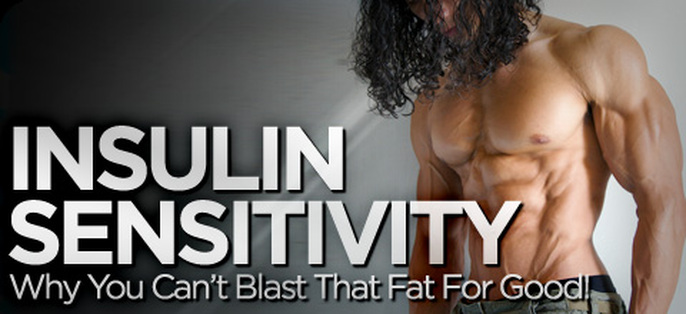 Have you reached the final fat loss plateau, tried everything and can't conquer it? Learn why Insulin Sensitivity is your biggest obstacle and how to defeat it to see the results!By: Paul EastwoodArticle Summary:As you become leaner your body will become more sensitive to insulin as a result.Of the macronutrients, fats are the best source of energy the body can receive.Your body actually needs very few carbohydrates to function properly day-to-day.
Insulin Sensitivity:
Why You Can't Blast That Fat For Good!Have you ever wondered why, after all the exercise and healthy eating you do, you still can't shift that last bit of fat? You hit the gym four to five times a week or more, you even try to get a run in over the weekend and on top of this you're eating all the healthiest food you can find; despite this your still not super lean like you want to be. I have the answer to your nightmare - Insulin sensitivity.
Insulin sensitivity will eventually replace the term "weight loss" and "fat loss" as the new hot topic. Insulin has a powerful ability to prevent fat breakdown by its anabolic (rebuilding) properties.
Few health and fitness professionals know or understand Insulin sensitivity (IS) which is why its no wonder that the every day man or woman is finding weight and fat so difficult to lose; it's incredibly hard to win against an obstacle you don't know is there!
Let me explain Insulin's role and how it's sensitivity changes depending upon how close you are to your weight and fat loss goals.
READ MORE:
|

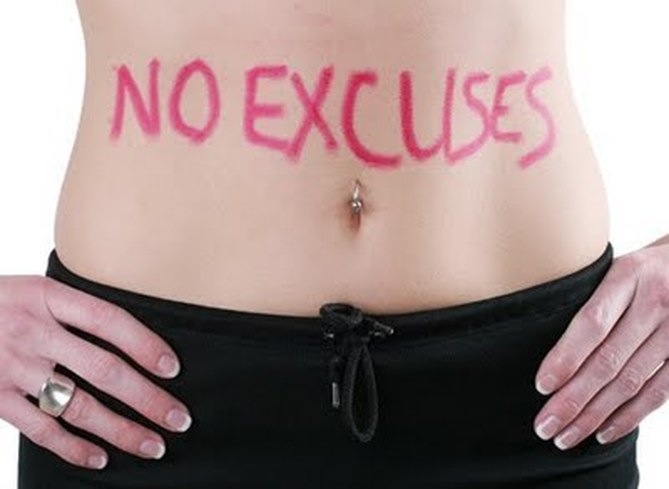


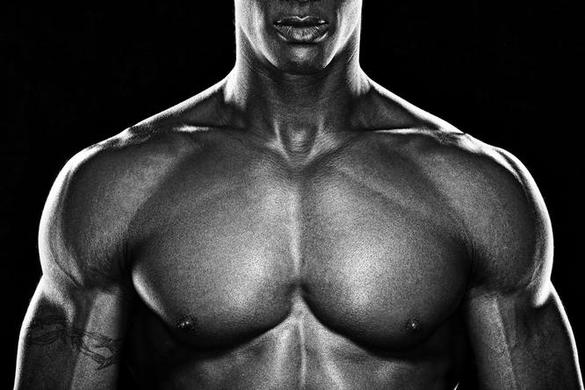





 RSS Feed
RSS Feed







